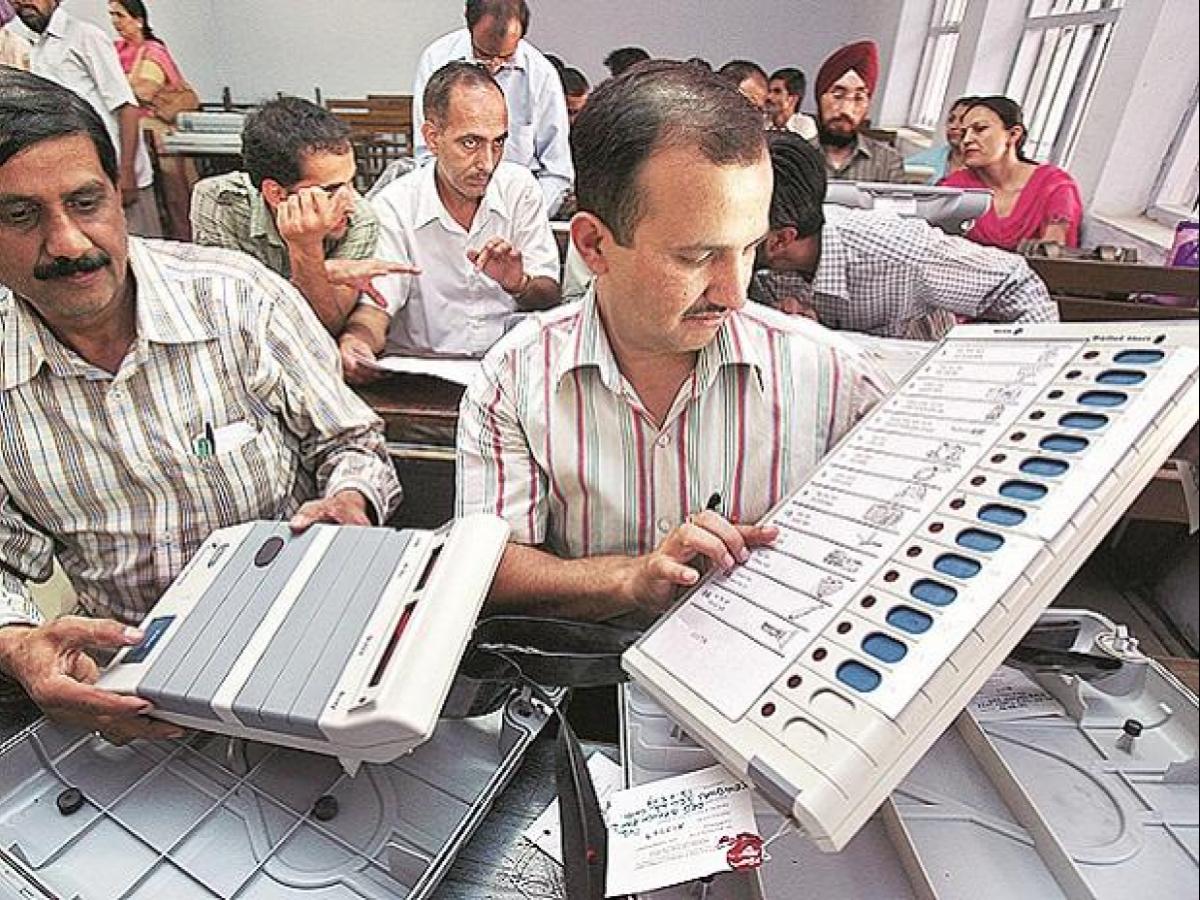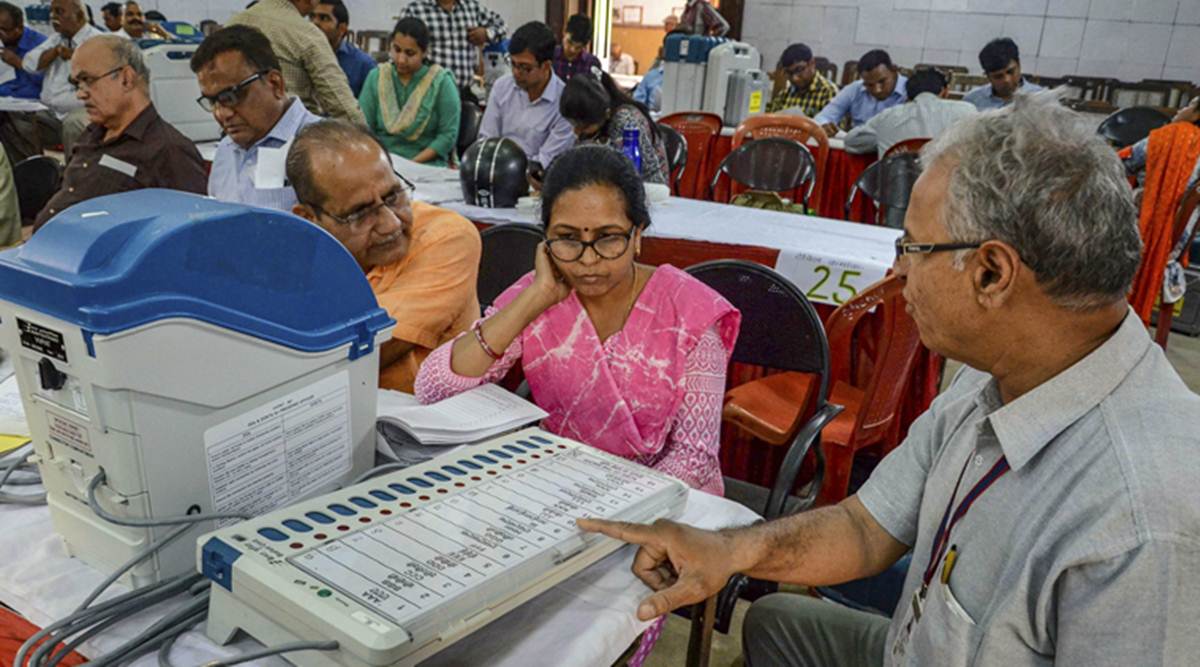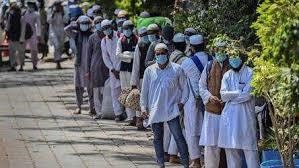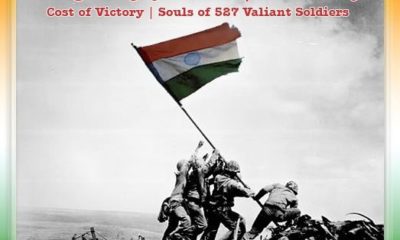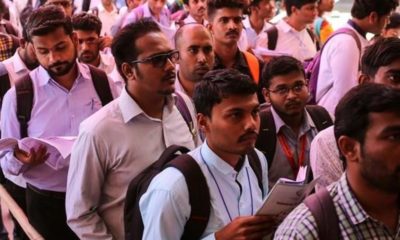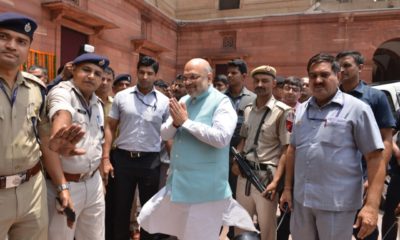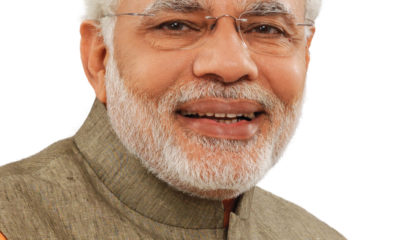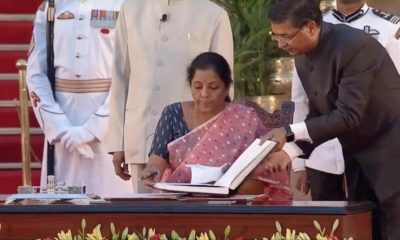Feature
Know here how counting process takes place in EVMs after voting!
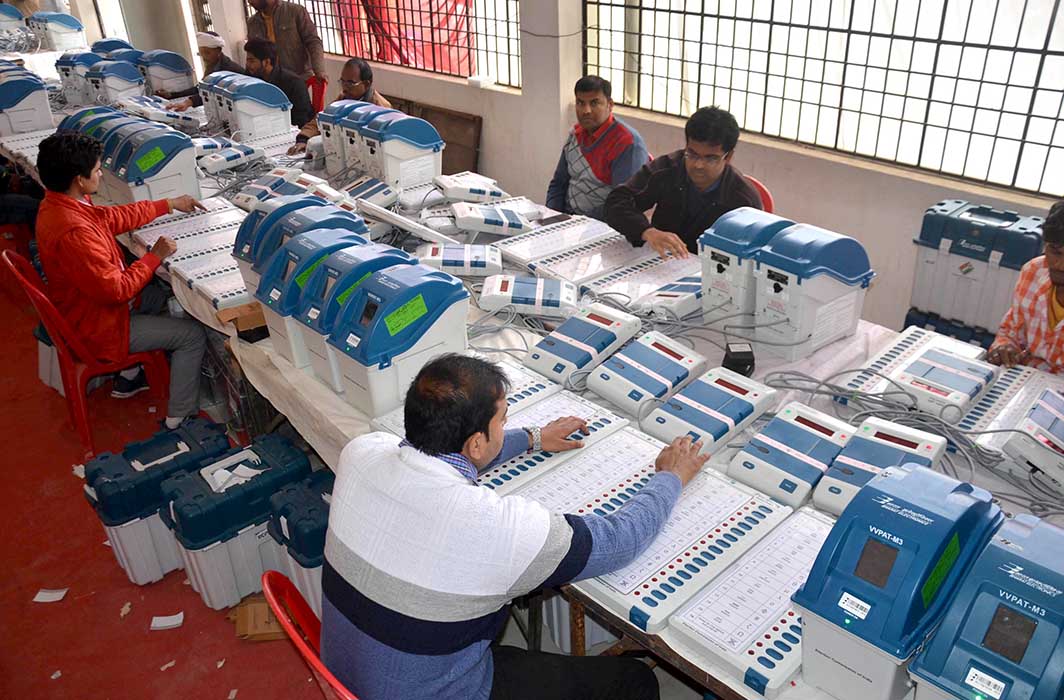
New Delhi: Amid allegations that the Electronic Voting Machines (EVMs) used in the elections were being changed ahead of counting of votes on Thursday, PRS Legislative Research, an independent research institute, on Wednesday explained how the counting process takes place.
The polls to elect the 17th Lok Sabha were held in seven phases for 542 constituencies till May 19.
The EVMs, over which questions are being raised lately, have been used for elections since 2000.
The Election Commission (EC) has conducted 113 Assembly elections and three general elections using EVMs.
VVPAT system, which generates a printer paper slip bearing the name and election symbol of the candidate voted for, was added to EVMs in 2013 to increase transparency and improve voter confidence in the system.
On April 8, 2019, the Supreme Court instructed the EC that printed VVPAT slips from randomly selected five polling stations in each Assembly segment of a parliamentary constituency should be matched with EVMs.
This is how the process is explained:
Who is responsible for counting the votes?
The Returning Officer (RO) is responsible for conducting elections in a constituency, which also includes counting of votes. The RO is an officer of the government or a local authority nominated by the EC for each constituency in consultation with the state government.
Where does the counting take place?
The RO decides the place where the votes will be counted for the parliamentary constituency. The date and time of counting is fixed by the EC. Ideally, counting of votes for a constituency should be done at one place, preferably at the headquarters of the RO in that constituency.
It should be performed under the direct supervision of the RO. However, each parliamentary constituency has multiple Assembly segments. In this situation, counting can take place at different locations for various Assembly segments under the direct supervision of an Assistant Returning Officer (ARO).
Read here this is how vote counting process is undertaken after polling!
Counting of votes for each Assembly segment of a parliamentary constituency is performed in a single hall. In each round of counting, votes from 14 EVMs are counted. In case of simultaneous parliamentary and Assembly elections, such as Odisha, the first seven tables are used for counting votes for Assembly elections, and the rest for parliamentary elections.
In constituencies with a large number of candidates, it may not be possible to count votes for all candidates in a single hall without overcrowding it. In such a situation, the number of counting halls or tables can be increased with the prior permission of the EC. A hall can also be used for counting votes of another Assembly segment after the results of the first segment are declared. However, counting may be done for only one Assembly segment in a hall at any point of time.
What is the counting process?
Counting is performed by counting supervisors appointed by the RO. Counting staff is appointed through a three stage randomisation process to ensure impartiality. Candidates along with their counting agents and election agents are also present in the counting hall.
Counting of votes begins with Electronically Transmitted Postal Ballots (ETPB) and Postal Ballots (PB). These votes are counted under the direct supervision of the RO. Counting of EVMs can start 30 minutes after the commencement of PB counting, even if all PBs have not been counted. At the end of each round of counting, the results from 14 EVMs are declared.
What is the process for counting VVPAT slips?
The EC prescribes the process for randomly selecting one EVM for each Assembly segment of a parliamentary constituency for VVPAT matching. The verification of VVPAT paper slips is conducted inside a secured VVPAT Counting Booth in the counting hall with access to authorised personnel only. Any counting table in the hall can be converted into VVPAT Counting Booth after completing EVM vote counting. Parliamentary constituencies generally have between five and 10 Assembly segments.
The Supreme Court has decided that VVPAT slips of five randomly selected polling stations for each Assembly segment shall be matched with the result shown in the respective EVMs. This implies that VVPAT paper slips need to be matched for about 25-50 machines for each parliamentary constituency. This process requires personal supervision of RO/ARO.
The EC has decided that the counting of five VVPATs will be done sequentially. The RO can declare the final result for the constituency after the VVPAT matching process has been completed.
What happens if there is a discrepancy between the VVPAT count and the EVM results?
In such a case, the printed paper slips count is taken as final. The EC has not clarified whether there would be any further action (such as counting of all VVPATs in a constituency or Assembly segment) if there is a discrepancy in the counts of one of the five VVPATs.
Entertainment
Meghalaya Reserves Legalized Gambling and Sports Betting for Tourists

The State Scores Extra High on Gaming-Friendly Industry Index
Meghalaya scored 92.85 out of 100 possible points in a Gaming Industry Index and proved to be India’s most gaming-friendly state following its recent profound legislation changes over the field allowing land-based and online gaming, including games of chance, under a licensing regime.
The index by the UK India Business Council (UKIBC) uses a scale of 0 to 100 to measure the level of legalisation on gambling and betting achieved by a state based on the scores over a set of seven different games – lottery, horse racing, betting on sports, poker, rummy, casino and fantasy sports
Starting from February last year, Meghalaya became the third state in India’s northeast to legalise gambling and betting after Sikkim and Nagaland. After consultations with the UKIBC, the state proceeded with the adoption of the Meghalaya Regulation of Gaming Act, 2021 and the nullification of the Meghalaya Prevention of Gambling Act, 1970. Subsequently in December, the Meghalaya Regulation of Gaming Rules, 2021 were notified and came into force.
All for the Tourists
The move to legalise and license various forms of offline and online betting and gambling in Meghalaya is aimed at boosting tourism and creating jobs, and altogether raising taxation revenues for the northeastern state. At the same time, the opportunities to bet and gamble legally will be reserved only for tourists and visitors.
“We came out with a Gaming Act and subsequently framed the Regulation of Gaming Rules, 2021. The government will accordingly issue licenses to operate games of skill and chance, both online and offline,” said James P. K. Sangma, Meghalaya State Law and Taxation Minister speaking in the capital city of Shillong. “But the legalized gambling and gaming will only be for tourists and not residents of Meghalaya,” he continued.
To be allowed to play, tourists and people visiting the state for work or business purposes will have to prove their non-resident status by presenting appropriate documents, in a process similar to a bank KYC (Know Your Customer) procedure.
Meghalaya Reaches Out to a Vast Market
With 140 millions of people in India estimated to bet regularly on sports, and a total of 370 million desi bettors around prominent sporting events, as per data from one of the latest reports by Esse N Videri, Meghalaya is set to reach out and take a piece of a vast market.
Estimates on the financial value of India’s sports betting market, combined across all types of offline channels and online sports and cricket predictions and betting platforms, speak about amounts between $130 and $150 billion (roughly between ₹9.7 and ₹11.5 lakh crore).
Andhra Pradesh, Telangana and Delhi are shown to deliver the highest number of bettors and Meghalaya can count on substantial tourists flow from their betting circles. The sports betting communities of Karnataka, Maharashtra, Uttar Pradesh and Haryana are also not to be underestimated.
Among the sports, cricket is most popular, registering 68 percent of the total bet count analyzed by Esse N Videri. Football takes second position with 11 percent of the bets, followed by betting on FIFA at 7 percent and on eCricket at 5 percent. The last position in the Top 5 of popular sports for betting in India is taken by tennis with 3 percent of the bet count.
Local Citizens will Still have Their Teer Betting
Meghalaya residents will still be permitted to participate in teer betting over arrow-shooting results. Teer is a traditional method of gambling, somewhat similar to a lottery draw, and held under the rules of the Meghalaya Regulation of the Game of Arrow Shooting and the Sale of Teer Tickets Act, 2018.
Teer includes bettors wagering on the number of arrows that reach the target which is placed about 50 meters away from a team of 20 archers positioned in a semicircle.
The archers shoot volleys of arrows at the target for ten minutes, and players place their bets choosing a number between 0 and 99 trying to guess the last two digits of the number of arrows that successfully pierce the target.
If, for example, the number of hits is 256, anyone who has bet on 56 wins an amount eight times bigger than their wager.

